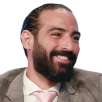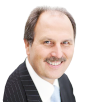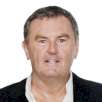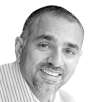A passionate advocate for high-quality dental care, Dr Miguel Stanley created the No Half Smiles treatment philosophy. He is committed to education in the dental community, serving as vice president of the Digital Dentistry Society, an expert on the online education platform DentalXP and an adjunct assistant professor at the University of Pennsylvania School of Dental Medicine in the US. He is also involved in charitable work through the Global Child Dental Fund and Humble Smile Foundation. On 27 October, he will be presenting in Dubai at the CAD/CAM Digital & Oral Facial Aesthetics Conference and Exhibition. The Centre for Advanced Professional Practices (CAPP), which is organising the event, spoke with him about his treatment focus, what attendees can expect from his presentations, and the importance of the positive dentistry mindset now and in the future.
Could you tell us about your journey and what led you to become a dentist?
I was born in South Africa in the seventies. Unfortunately, back then, knowledge on the dangers of consuming processed and sugary foods was not what it is today, so I had a lot of dental caries before I was 12 and suffered quite a bit at the hand of dentists—this gave me a fear of dentists, so it’s ironic that I ended up becoming one. Back in the nineties, it was easier and faster to become a dentist than to become a cardiologist, which was what I really wanted to do. I never thought I’d be a dentist, but then I discovered that there was a huge opportunity to grow within what was a relatively unknown profession, and I’ve never looked back. I’m very grateful to have become a dentist in the nineties and to have had the experience of the following decades of great change. It’s given me an amazing opportunity to see the evolution of the field.
What areas of dentistry do you specialise in, and what motivated you to focus on those particular areas?
I don’t think that in healthcare, and in dentistry in particular, anybody is ever truly specialised, although of course one may have a qualification or an accreditation that says one is. I understand though that the question really is about the kind of a dentist I am. I think that this can be explained better by focus of interest. I am trained in implant dentistry and prosthodontics and have a particular focus on implant surgery and complex bone regeneration, which is one of the topics I’ll be talking about in my lecture at the CAPP event. I’ve been placing implants now for over 22 years, and within that field, my focus is comprehensive complex case management, the difficult stuff using surgical guides, software planning, 3D printing and so on. In prosthodontics, I very early on started focusing on occlusion-driven aesthetic dentistry, restoring a functional occlusion and not just achieving beautiful aesthetics. These two focuses of interest combined cover the full span of modern rehabilitation. My focus of interest isn’t a single area; it’s managing full-mouth comprehensive restorative dentistry with a focus on biology, immunology, function and aesthetics, using the entire array of tools that are available to the modern dentist with my long-time team at the White Clinic.
What can attendees expect from your lecture, titled “Building a successful practice around successful regeneration”, and seminar on positive dentistry at the October conference in Dubai?
I’ve continually learned in life that it’s never good to expect anything; rather one should keep an open mind and be curious. I think that a dentist has to be a teacher first and foremost. That means that I will be teaching the audience something, but I also hope to learn because one of the privileges of engaging with the public is that you can also get feedback from the audience. In my lecture, I will cover the topics of how modern biomaterials can help create more predictable results in comprehensive periodontal and oral surgery solutions, meaning complex cosmetic 3D hard- and soft-tissue regeneration protocols, such as the combination of hyaluronic acid with xenograft material, as well as new materials such as magnesium membranes and fully resorbable screws, which would allow all the benefits of a metal mesh but without the need for a second-stage surgery. I’ll be talking about that and why it is very important—because I won’t be only showing cases, but also be talking about practice management—to only work with the best companies and the best materials if you want to run a successful practice, not just because the products are good, but also because there’s a lot of business intelligence to be gained from the companies that develop leading biomaterials.
Regarding the seminar on positive dentistry, that’s going to involve a lot of storytelling about how to navigate the current trends in modern dentistry, how to work out what’s marketing and what’s actually science, and how you can create and elevate your practice around a positive mindset that is founded on science, clinical evidence and a comprehensive understanding of the modern dental workflow that will combine clinical practice and technology because the modern dental consumer is smarter and is looking for better solutions to complex problems, and I think that every dentist is looking for exactly that. How can I be more successful and have more time for my family and have the recognition among my peers that I deserve? That’s what we’re going to talk about.
How does the concept of successful regeneration tie into the principles of positive dentistry? How do these two concepts complement each other in the context of building a successful dental practice?
Very simply: nothing positive comes from a failed bone regeneration. Your day will go poorly, your reputation will be affected, and you will lose money, time and energy. If you miscalculate even the simplest of therapies through poor treatment planning or the selection of the wrong material, or if you skip steps or cut corners to save time and/or money, thinking that you are outsmarting the clinical evidence and the leaders of industry, then inevitably you will create a toxic environment for yourself, your patient and your team. It’s essential to make the right choices when planning treatment and purchasing biomaterials. We all know that the best biomaterials are very expensive. There’re a lot of cheaper solutions on the market that claim to do the same thing, but don’t have the patents or the appropriately qualified people developing them. We need to be very careful to separate marketing from science. In order to build a positive work environment, you need to make a serious commitment to excellence, especially when doing bone regeneration. Failure is very expensive, so we’ve got to get it right.
Could you provide an overview of the key elements or strategies involved in building a successful practice around successful regeneration? How do these strategies align with the principles of positive dentistry?
My rules of life are very simple. Treat fewer patients a day with a higher degree of excellence, precision and planning. Follow gold standard evidence-based protocols in a sterile environment without cutting any corners and by doing everything properly—and even then, you might have some complications. Following these rules means that you cannot have a large volume of work if you are building a practice that does a lot of 3D bone regeneration for implant placement. It’s not about the number of cases you treat; it’s about the number of failures you have or, more importantly, you do not have. It’s the very careful and delicate balance between your desire to produce more work and have less failure. Success is a mindset where you have to balance your desire to be financially successful and be a leader in your industry and to actually protect your patient from harm. We all understand the Hippocratic oath of “do no harm”, and at many points, being a successful dentist and creating a positive environment require you to slow down and do the right thing. That is the mindset of positive dentistry.
When it comes to implementing successful regeneration techniques, what are some common challenges that dentists may face, and how can these be overcome? How does the positive dentistry mindset help address these challenges?
First, you have to define what success is for you. For me personally, success is not about being the guy who does the most cases or has the most money in the bank. For me, success is going home every day knowing that my patients are satisfied with the work that we have done.
How do you reduce complications and failures? Talking about success is very easy, but in order to have a truly positive work environment and a successful, positive mindset in what is one of the toughest jobs in the world—requiring a substantial number of algorithms to be considered and followed every single time you engage with a patient in order to plan and predict a successful outcome, not to mention the dexterity, training, technology, materials, resources and team you have to have put in place—you have to do things properly and plan properly and that takes time. This is an orchestration of great complexity and means that the best periodontists and the best reconstructive dental surgeons in the world will not see a high volume of cases a day.
Through the Slow Dentistry Global Network—of which I’m the co-founder—we have learned that many of the dentists who suffer from mental anguish, mental illness, stress, fatigue and burn-out all have one thing in common: they see too many patients a day and are under great pressure. Perhaps seeing a lot of patients a day is okay if you’re doing hygiene or fillings, but then again, in my personal experience, it’s never okay. If you are performing 3D bone and soft-tissue regeneration with implants and bone grafts, you really need to be on board and hands-on with your patients because failure is something that is very prevalent. It happens to the best of us, and you need to really have an amazing team around you to help work through the complexities of case management.
With that said, here are a few things that I do that not many people believe. The first thing is that, because tobacco directly affects healing and I want to be successful in treating patients, I don’t operate on smokers. The second one is that I do not operate on patients with low vitamin D levels. Botiss just launched botissCARE, so now we can test vitamin D chairside and immediately supplement with vitamin D3 and K2 to improve the blood concentration of vitamin D3 and K2 and thereby improve, based on science, the quantity of calcium and mineralisation of the bone, which is very important for successful regeneration. Sometimes—and that is a message I am bringing to the CAPP meeting—it’s not just about technique and materials but also about improving the patient’s baseline and about making very careful patient selection if you want to be continuously successful. Sometimes, the most powerful word for success is “no”.
Looking ahead, what do you envision as the future of successful regeneration in dentistry, and how do you see positive dentistry shaping the evolution of dental practices in this regard?
Stem cell therapy is showing incredible advances in how we can build new bone and soft tissue. I did a documentary with National Geographic in 2019 in which we spoke to companies that are doing bioprinting, 3D printing of living tissue such as cartilage and gingiva. We are already seeing incredible steps in the use of CRISPR technology in genetic science, and I think that, if you look at the work of the best in the world in periodontal surgery, the techniques have really improved dramatically, but I think that the greatest leaps will come from understanding immunology, physiology and new advanced biomaterials, smart materials that can be custom-made for patients’ immune response, affording more predictable and successful outcomes. Some companies, like botiss, can already customise and 3D mill bone, and depending on where you are in the world, stem cell technology is already available. I think there’s going to be a very exciting future for all of us in this arena, but it is very important also to understand that we must stop thinking of the mouth and the bone of the oral cavity as separate; they are part of a human system, and our patients’ overall systemic health will have a direct impact on the success of the regeneration. Likewise, we are not just doctors of the mouth; we are doctors per se, requiring us to think holistically. For example, we shouldn’t expect amazing regeneration results if the patient has an adjacent tooth with a massive infection. It’s also important to consider the role of the bone marrow as part of our immune system, giving us a unique opportunity when dealing with patients’ bone to cultivate an incredible amount of healing through the way that we engage our patients’ immune system.
Part of my topic as well is therefore to discuss how immunology, in what I like to call immune dentistry, is playing a huge role in the way that we think and the way that we understand success in the future. I believe that immune dentistry will be one of the new trends, combined with the understanding that we shouldn’t think of the mechanics or the macro-biology only but also think of a patient’s individual genetic understanding and acceptance of the therapeutic process that we are applying. Globally, there’s a small percentage of cases that fail, and we simply accept the reasons for this to be self-evident. However, if we all focus on, let’s say, a zero-failure policy, what would that look like?
With this all in mind, I’d like to come to the conference and talk with some of these leaders that you have invited and learn from them as well. I look forward to sitting in the front row and watching this amazing show that you have put on of science and education, and I’m very grateful and very honoured that you would invite me to be part of this amazing meeting.
For more information about the upcoming conference where Dr. Miguel will be one of the key opinion leaders, please visit: www.cappmea.com/confex
The Success Simplified Roadshow with Dr. Carlos Sabrosa, an event organised by CAPP and GNP Academy and supported by 3M, took place across three different ...
The 36th Int’l Dental ConfEx CAD/CAM Digital & Oral Facial Aesthetics is scheduled to take place on 27th and 28th October at the Madinat Jumeirah ...
The collaborative efforts of the Kuwaiti Orthodontics Society (KOS) and the Center for Advanced Professional Practices (CAPP) lead to highly successful 1st ...
The General Assembly of the International Society for Laser Dentistry (ISLD) has recently conducted a vote to determine the host city for the upcoming 20th ...
DUBAI, UAE: The upcoming annual dental conference, 36th Int’l Dental ConfEx CAD/CAM Digital & Oral Facial Aesthetics, organized by CAPP, promises to ...
Prepare to seize a rare opportunity as Dr Galip Gürel, the esteemed author of “The Science and Art of Porcelain Laminate Veneers,” arrives in Dubai to ...
The coronavirus (COVID-19) pandemic is an unprecedented ongoing global health crisis, which has already led to loss of too many lives. Global businesses ...
AACHEN, GERMANY: On 16-19 December 2019, dental professionals who were part of the Laser Mastership Programme CAPP UAE cohort of 2019, successfully ...
Dental Tribune Middle East and Africa interviewed Dr. Fatma Banday, a General Dentist who previously lived and worked in Karachi, Pakistan. Dr. Fatma ...
Are you an implantologist looking to enhance your skills and knowledge in the field of implantology? Look no further than the 36th CAD/CAM Digital & ...
Dr. Rami Haidar BDS MFDS RCS ED
Prof. Norbert Gutknecht DDS, PhD
Dr. Ashish Rayarel BDS MFGDP(UK) MSc



 Austria / Österreich
Austria / Österreich
 Bosnia and Herzegovina / Босна и Херцеговина
Bosnia and Herzegovina / Босна и Херцеговина
 Bulgaria / България
Bulgaria / България
 Croatia / Hrvatska
Croatia / Hrvatska
 Czech Republic & Slovakia / Česká republika & Slovensko
Czech Republic & Slovakia / Česká republika & Slovensko
 France / France
France / France
 Germany / Deutschland
Germany / Deutschland
 Greece / ΕΛΛΑΔΑ
Greece / ΕΛΛΑΔΑ
 Italy / Italia
Italy / Italia
 Netherlands / Nederland
Netherlands / Nederland
 Nordic / Nordic
Nordic / Nordic
 Poland / Polska
Poland / Polska
 Portugal / Portugal
Portugal / Portugal
 Romania & Moldova / România & Moldova
Romania & Moldova / România & Moldova
 Slovenia / Slovenija
Slovenia / Slovenija
 Serbia & Montenegro / Србија и Црна Гора
Serbia & Montenegro / Србија и Црна Гора
 Spain / España
Spain / España
 Switzerland / Schweiz
Switzerland / Schweiz
 Turkey / Türkiye
Turkey / Türkiye
 UK & Ireland / UK & Ireland
UK & Ireland / UK & Ireland
 International / International
International / International
 Brazil / Brasil
Brazil / Brasil
 Canada / Canada
Canada / Canada
 Latin America / Latinoamérica
Latin America / Latinoamérica
 USA / USA
USA / USA
 China / 中国
China / 中国
 India / भारत गणराज्य
India / भारत गणराज्य
 Japan / 日本
Japan / 日本
 Pakistan / Pākistān
Pakistan / Pākistān
 Vietnam / Việt Nam
Vietnam / Việt Nam
 ASEAN / ASEAN
ASEAN / ASEAN
 Israel / מְדִינַת יִשְׂרָאֵל
Israel / מְדִינַת יִשְׂרָאֵל
 Algeria, Morocco & Tunisia / الجزائر والمغرب وتونس
Algeria, Morocco & Tunisia / الجزائر والمغرب وتونس
:sharpen(level=0):output(format=jpeg)/up/dt/2024/04/53663749881_337f3c647e_k_1920x1080px.jpg)
:sharpen(level=0):output(format=jpeg)/up/dt/2024/04/NEWS_1920x1080px.jpg)
:sharpen(level=0):output(format=jpeg)/up/dt/2024/04/Angelo-Maura_Align-2_1920px.jpg)
:sharpen(level=0):output(format=jpeg)/up/dt/2024/04/A-non-surgical-orthodontic-approach-using-clear-aligners-in-a-Class-III-adult-patient_header.jpg)
:sharpen(level=0):output(format=jpeg)/up/dt/2024/04/Gustavsson-Malin-Q73H1073_1920x1080px.jpg)








:sharpen(level=0):output(format=png)/up/dt/2023/06/Align_logo.png)
:sharpen(level=0):output(format=png)/up/dt/2014/02/3shape.png)
:sharpen(level=0):output(format=png)/up/dt/2023/11/Patent%E2%84%A2-Implants-_-Zircon-Medical.png)
:sharpen(level=0):output(format=png)/up/dt/2011/11/ITI-LOGO.png)
:sharpen(level=0):output(format=png)/up/dt/2022/01/HASSBIO_Logo_horizontal.png)
:sharpen(level=0):output(format=jpeg)/up/dt/e-papers/337969/1.jpg)
:sharpen(level=0):output(format=jpeg)/up/dt/e-papers/334598/1.jpg)
:sharpen(level=0):output(format=jpeg)/up/dt/e-papers/333249/1.jpg)
:sharpen(level=0):output(format=jpeg)/up/dt/e-papers/329653/1.jpg)
:sharpen(level=0):output(format=jpeg)/up/dt/e-papers/326324/1.jpg)
:sharpen(level=0):output(format=jpeg)/up/dt/e-papers/322861/1.jpg)
:sharpen(level=0):output(format=png)/up/dt/2013/07/capp.png)
:sharpen(level=0):output(format=jpeg)/up/dt/2023/08/Miguel-Stanly__.jpg)
:sharpen(level=0):output(format=gif)/wp-content/themes/dt/images/dt-user.gif)
:sharpen(level=0):output(format=jpeg)/up/dt/2023/06/20230617_233838_1920px.jpg)
:sharpen(level=0):output(format=jpeg)/up/dt/2023/07/CONFEX_ALL-SEMINARS_1920x1080px.jpg)
:sharpen(level=0):output(format=jpeg)/up/dt/2024/01/1st-Kuwaiti-Orthodontics-Symposium_1920px.jpg)
:sharpen(level=0):output(format=jpeg)/up/dt/2023/12/ISLD-CAPP_1920x1080px.jpg)
:sharpen(level=0):output(format=jpeg)/up/dt/2023/03/shutterstock_166468922_1920x1080px-1.jpg)
:sharpen(level=0):output(format=jpeg)/up/dt/2024/02/Galip_1920x1080px_.jpg)
:sharpen(level=0):output(format=jpeg)/up/dt/2020/03/eMeeting.jpg)
:sharpen(level=0):output(format=jpeg)/up/dt/2020/01/Delegates-doing-the-written-exam-in-Aachen-University-Germany.jpg)
:sharpen(level=0):output(format=jpeg)/up/dt/2023/12/Photo_1920x1080px-copy.jpg)
:sharpen(level=0):output(format=jpeg)/up/dt/2023/09/shutterstock_775942078_1920x1080px.jpg)





:sharpen(level=0):output(format=jpeg)/up/dt/2024/04/NEWS_1920x1080px.jpg)
:sharpen(level=0):output(format=jpeg)/up/dt/2024/03/PHOTO-2024-01-19-10-43-02_1920x1080px.jpg)
:sharpen(level=0):output(format=jpeg)/up/dt/2024/03/8_.jpg)
:sharpen(level=0):output(format=jpeg)/up/dt/e-papers/334598/1.jpg)
:sharpen(level=0):output(format=jpeg)/up/dt/e-papers/333249/1.jpg)
:sharpen(level=0):output(format=jpeg)/up/dt/e-papers/329653/1.jpg)
:sharpen(level=0):output(format=jpeg)/up/dt/e-papers/326324/1.jpg)
:sharpen(level=0):output(format=jpeg)/up/dt/e-papers/322861/1.jpg)
:sharpen(level=0):output(format=jpeg)/up/dt/e-papers/337969/1.jpg)
:sharpen(level=0):output(format=jpeg)/up/dt/e-papers/337969/2.jpg)
:sharpen(level=0):output(format=jpeg)/wp-content/themes/dt/images/3dprinting-banner.jpg)
:sharpen(level=0):output(format=jpeg)/wp-content/themes/dt/images/aligners-banner.jpg)
:sharpen(level=0):output(format=jpeg)/wp-content/themes/dt/images/covid-banner.jpg)
:sharpen(level=0):output(format=jpeg)/wp-content/themes/dt/images/roots-banner-2024.jpg)
To post a reply please login or register